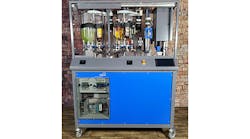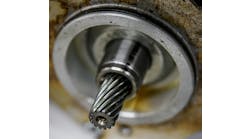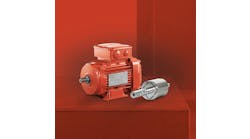Aaron Burlew is applications engineer at Teknic. Founded in 1985, Teknic designs and manufactures servo motion control components in Victor, New York.
What have been the biggest improvements to motor and drives in the past five years?
Aaron Burlew, applications engineer, Teknic: Without a question it would be fully integrated, all-in-one, brushless servo motors—motion controller, servo drive, encoder and brushless motor. The benefits are compelling: fewer internal components, reduction in cables, less electronic cabinet space requirements directly translate into higher reliability, lower cost and overall improved motion performance.
What’s the most innovative or efficient motor/drive application you’ve ever seen or been involved with?
Aaron Burlew, applications engineer, Teknic: Warehouse automation and optimization is rapidly decreasing the footprint required while increasing the throughput of product retrieval. Techniques to increase efficiency include product density, product arraignment based on order frequency and robot path planning.
How have motors and drives benefitted from remote monitoring and connectivity?
Aaron Burlew, applications engineer, Teknic: Integrated brushless servo motors provide remarkable diagnostic capabilities to monitor both the health of the electronics and of the machine mechanics itself (Figure 1). Special motion profiles can automatically collect real-time statistics about the mechanics and trends in friction and vibration. The motor’s internal processor can also sample valuable parameters such as temperature, voltage, root-mean-squared (RMS) torque, peak torque and positional errors, to name a few. These parameters provide insight regarding recommendations for scheduled service long before actual errors, avoiding costly downtimes.
Can you explain how software development has changed motor and drive design and production?
Aaron Burlew, applications engineer, Teknic: The drive toward open-source software has been remarkable. C++ is well-established as a high-performance, open software language that is highly portable across different environments—QNX, InTime, FreeRTOS, Linux, Windows and even many real-time kernals. Open-source communities, such as GitHub, have democratized software development, and new features and capabilities can be rapidly shared across the globe. This wasn’t, and still isn’t, possible with older, proprietary motion languages.
When will motors and drives become IT-friendly enough that engineers are no longer required for installation and operation?
Aaron Burlew, applications engineer, Teknic: Good news. We’re already there. For example, integrated servo motors are automatically cognizant of all motor parameters and include auto-tune functionality—no PID experience required. The setup-and-configuration software is easy to use with pre-defined motion control modes—no software coding is required—and motion that can be triggered with simple buttons/switches. Modern systems also have optically isolated electrical interfaces, making wiring fool-proof.
Tell us about your company’s state-of-the-art motor or drive?
Aaron Burlew, applications engineer, Teknic: ClearPath servo motors are fully integrated brushless motors, which include a motion controller, a digital drive, a high-resolution optical encoder, all embedded within the motor itself. These integrated units eliminate the hassle of setting up a traditional servo, yet still provide brushless servo performance at a price comparable to closed-loop stepper systems.







